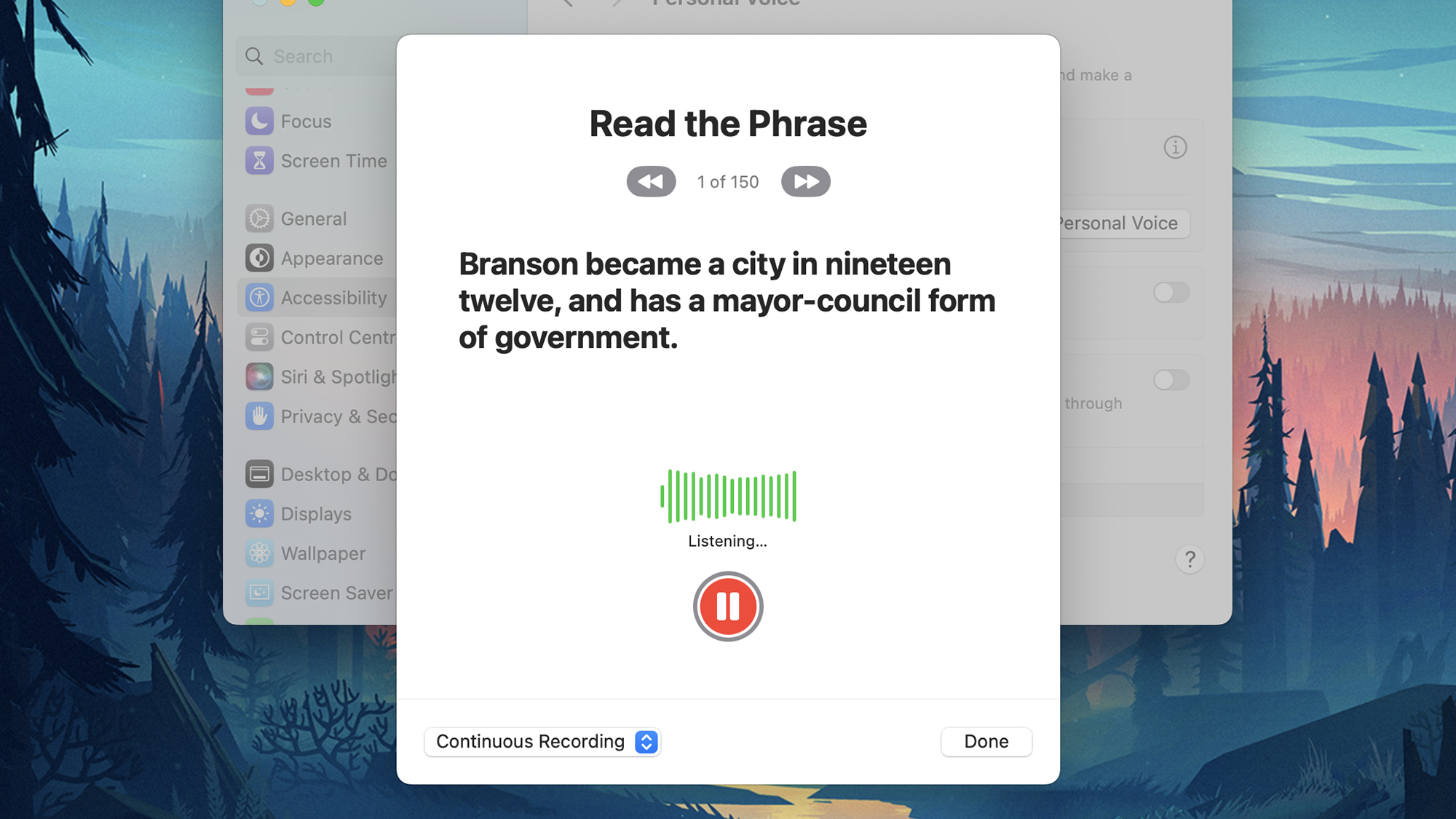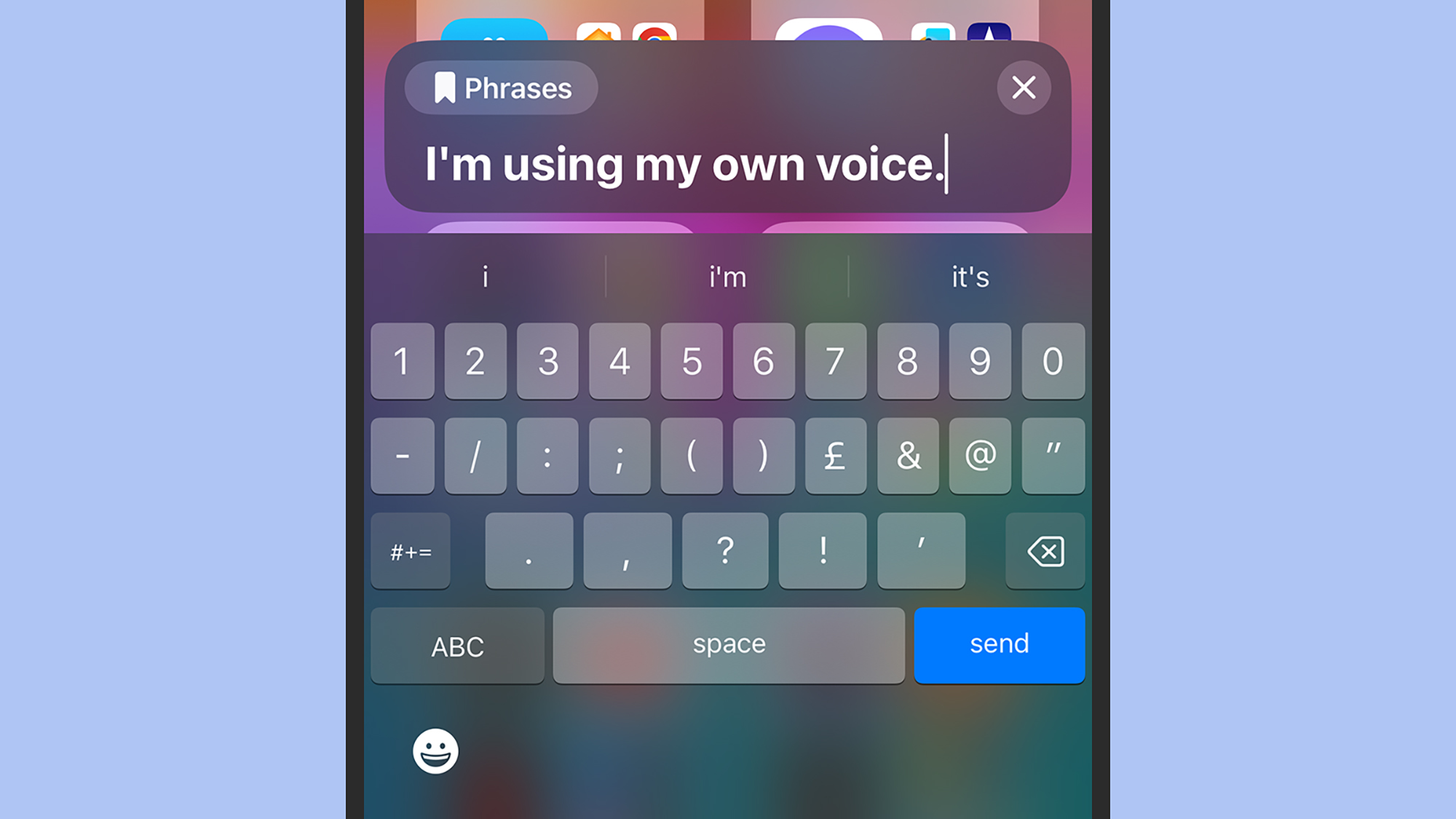

One feature you may not have come across on your iPhone or Mac is Personal Voice—it was only introduced in iOS 17 and macOS Sonoma. It essentially creates a clone of your voice, which you can then use in a variety of apps.
It was built as a game-changing accessibility feature for those at risk of losing their voice, giving them the opportunity to carry on talking through digital means even when they can no longer do it physically. However, it’s something anyone can make use of through their Apple devices.
Even if your voice is working fine, Personal Voice is an interesting feature to explore and set up—and an indication of the kind of technologies that artificial intelligence might continue to make possible in the years to come.
On-device machine learning AI is used to do the necessary processing, so all of your recorded audio stays on your devices, and isn’t sent back to the cloud. (If you decide to share it between devices, this will be done in encrypted form via iCloud.) Thanks to the protections Apple has built in here, no one is going to be able to use the tech to impersonate you in phone calls or recordings.
How to set up Personal Voice

From a software perspective, you need iOS 17, iPadOS 17, or macOS Sonoma—or a later version—to set up Personal Voice. For hardware, you need an iPhone 12, 5th-gen iPad Air, 3rd-gen 11-inch iPad Pro, 5th-gen 12.9-inch iPad Pro, or later, or a Mac with an Apple silicon chip inside (the M1 or later). Recording takes about 15 minutes, but you don’t need to do everything in one go.
If you’re using an iPhone or an iPad, head to Settings then tap Accessibility, Personal Voice, and Create a Personal Voice. On a Mac, you’ll find the same Accessibility option by opening the Apple menu then choosing System Settings.
Follow the instructions on screen to record your audio, giving your voice a name and then repeating the phrases as you’re asked to. To pause a recording session, tap or click the Done button, or quit out of the recording window, and the recordings you’ve done are saved for you to come back to whenever needed. Note that the processing to create the voice can take several hours.
You can create more than one Personal Voice, and you can delete any voices you’ve already configured from the same Personal Voice screen in Accessibility—just select the voice to bring up the option to erase it. You can also export the voice recordings you’ve made if you’d like.
How to use Personal Voice

Head into the Accessibility and Personal Voice screen on your iPhone, iPad, or Mac, and you’ll see two toggle switches: one to Share across devices and one to Allow applications to use your Personal Voice. Turn both of these on to make sure your voice can be used across every device you’re signed into with the same Apple ID.
Your Personal Voice can be used as part of another Apple accessibility feature called Live Speech, which is exactly what it sounds like: your synthesized voice used to talk in real time. To set it up, select Live Speech from the Accessibility menu on your Apple device—you’ll see that your newly created voice comes up as one of the options for the voice output, alongside the default system voice. You can also set up a bank of preset phrases from the same screen.
With Live Speech enabled, you can triple-tap the side button on an iPhone or iPad, or click the Live Speech icon in the menu bar on a Mac (it looks like a keyboard). You’re then able to type out a sentence which will be read out loud in your own voice. It will still have a synthesized edge to it, but the results are impressive.
The same Live Speech shortcut can be used if you’re in the Phone or FaceTime apps on your device, as well as in any other apps that support the Live Speech feature. Whenever the text input box appears, you’ll see a bookmark icon within it—click or tap on this to bring up your list of saved phrases.
